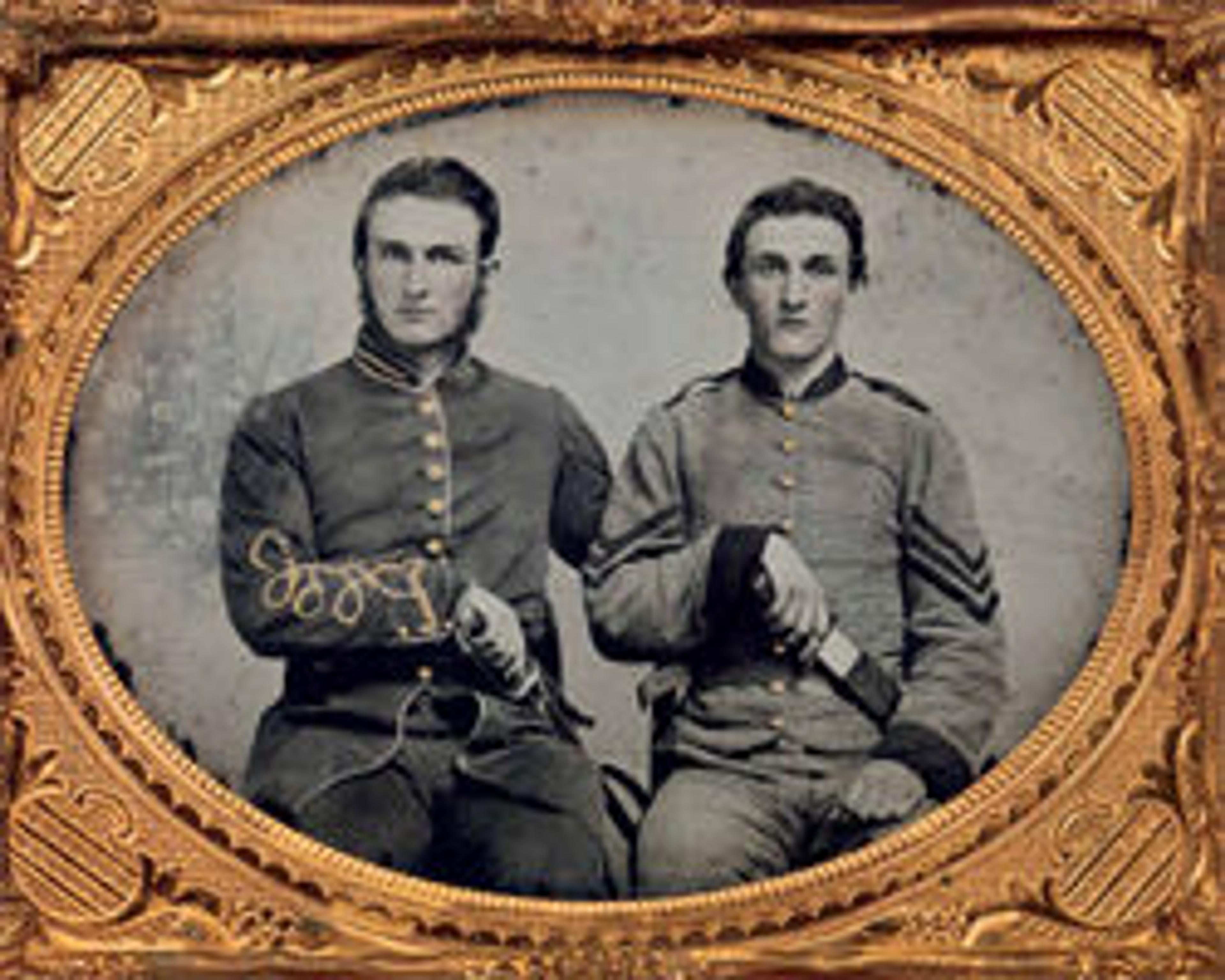Confederate Soldier [on the Battlefield at Antietam]
The Battle of Antietam (named after a creek near Sharpsburg, Maryland) occurred on September 17, 1862, and was known as the "bloodiest single day of the war." More than 26,000 soldiers on both sides were wounded or killed, including this Confederate soldier, who, according to the caption added by the Mathew Brady studio, "after being wounded, had dragged himself to a little ravine on the hillside, where he died." It is generally agreed that Brady and his photographers, who at this time still included Alexander Gardner, repositioned some of the recently dead at Gettysburg, and one may question the ultimate, artful arrangement of this Confederate soldier as well. With or without the physical intervention of Gardner, the photograph remains a heartbreaking testament to the victims of war. The image was published by Brady as a carte-de-visite-a small, inexpensive, and extremely popular format for portrait photographs during the 1860s and 1870s.
Artwork Details
- Title:Confederate Soldier [on the Battlefield at Antietam]
- Artist:Alexander Gardner (American, Glasgow, Scotland 1821–1882 Washington, D.C.)
- Publisher:Brady & Co. (American, active 1840s–1880s)
- Date:September 1862
- Medium:Albumen silver print from glass negative
- Dimensions:Image: 6.1 x 9.8 cm (2 3/8 x 3 7/8 in.)
- Classification:Photographs
- Credit Line:Purchase, Florance Waterbury Bequest, 1970
- Object Number:1970.537.4
- Curatorial Department: Photographs
More Artwork
Research Resources
The Met provides unparalleled resources for research and welcomes an international community of students and scholars. The Met's Open Access API is where creators and researchers can connect to the The Met collection. Open Access data and public domain images are available for unrestricted commercial and noncommercial use without permission or fee.
To request images under copyright and other restrictions, please use this Image Request form.
Feedback
We continue to research and examine historical and cultural context for objects in The Met collection. If you have comments or questions about this object record, please contact us using the form below. The Museum looks forward to receiving your comments.
